
Hey, Alexa, What Should Students Learn About A.I.?
Rohit Prasad, a senior Amazon executive, had an urgent message for ninth and 10th graders at Dearborn STEM Academy, a public school in Boston’s Roxbury neighborhood.
He had come to the school on a recent morning to observe an Amazon-sponsored lesson in artificial intelligence that teaches students how to program simple tasks for Alexa, Amazon’s voice-activated virtual assistant. And he assured the Dearborn students there would soon be millions of new jobs in A.I.
"We need to create the talent for the next generation,” Mr. Prasad, the head scientist for Alexa, told the class. “So we are educating about A.I. at the earliest, grass-roots level.”
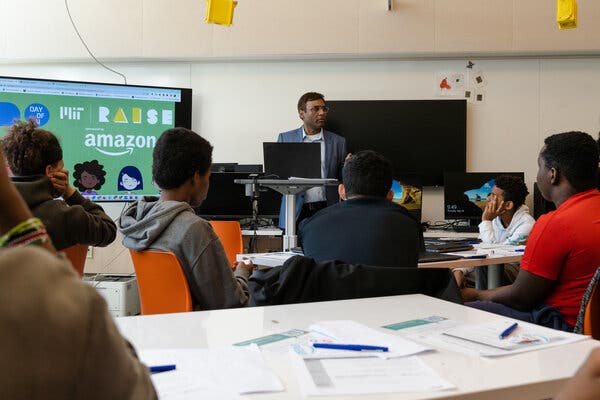
A few miles away, Sally Kornbluth, the president of the Massachusetts Institute of Technology, was delivering a more sobering message about A.I. to students from local schools who had gathered at Boston’s Kennedy Library complex for a workshop on A.I. risks and regulation.
“Because A.I. is such a powerful new technology, in order for it to work well in society, it really needs some rules,” Dr. Kornbluth said. “We have to make sure that what it doesn’t do is cause harm.”
The same-day events — one encouraging work in artificial intelligence and the other cautioning against deploying the technology too hastily — mirrored the larger debate currently raging in the United States over the promise and potential peril of A.I.
Both student workshops were organized by an M.I.T. initiative on “responsible A.I.” whose donors include Amazon, Google and Microsoft. And they underscored a question that has vexed school districts across the nation this year: How should schools prepare students to navigate a world in which, according to some prominent A.I. developers, the ascendancy of A.I.-powered tools seems all but inevitable?
Teaching A.I. in schools is not new. Courses like computer science and civics now regularly include exercises on the societal impacts of facial recognition and other automated systems.
But the push for A.I. education took on more urgency this year after news about ChatGPT — a novel chatbot that can create humanlike homework essays and sometimes manufactures misinformation — began spreading in schools.
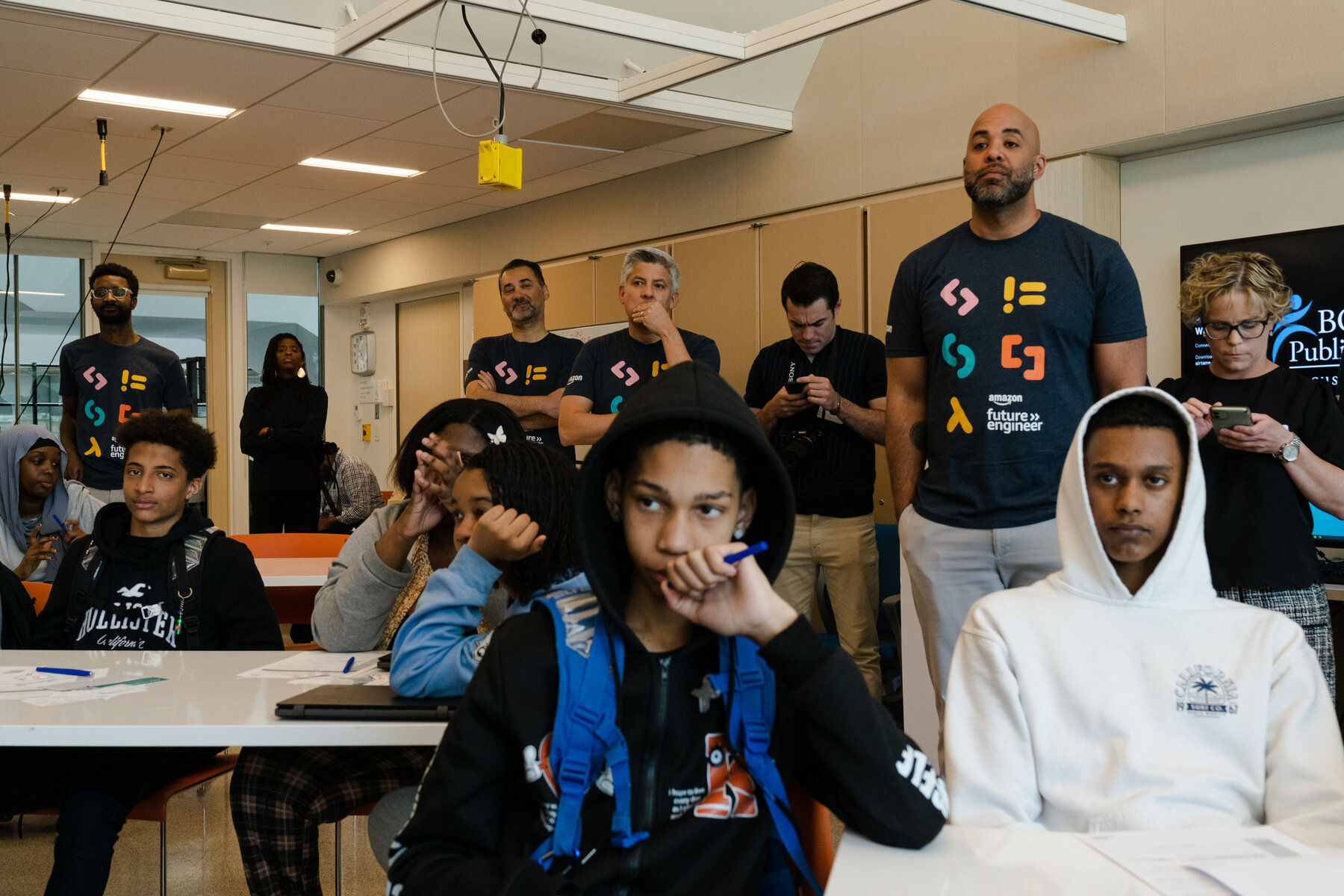
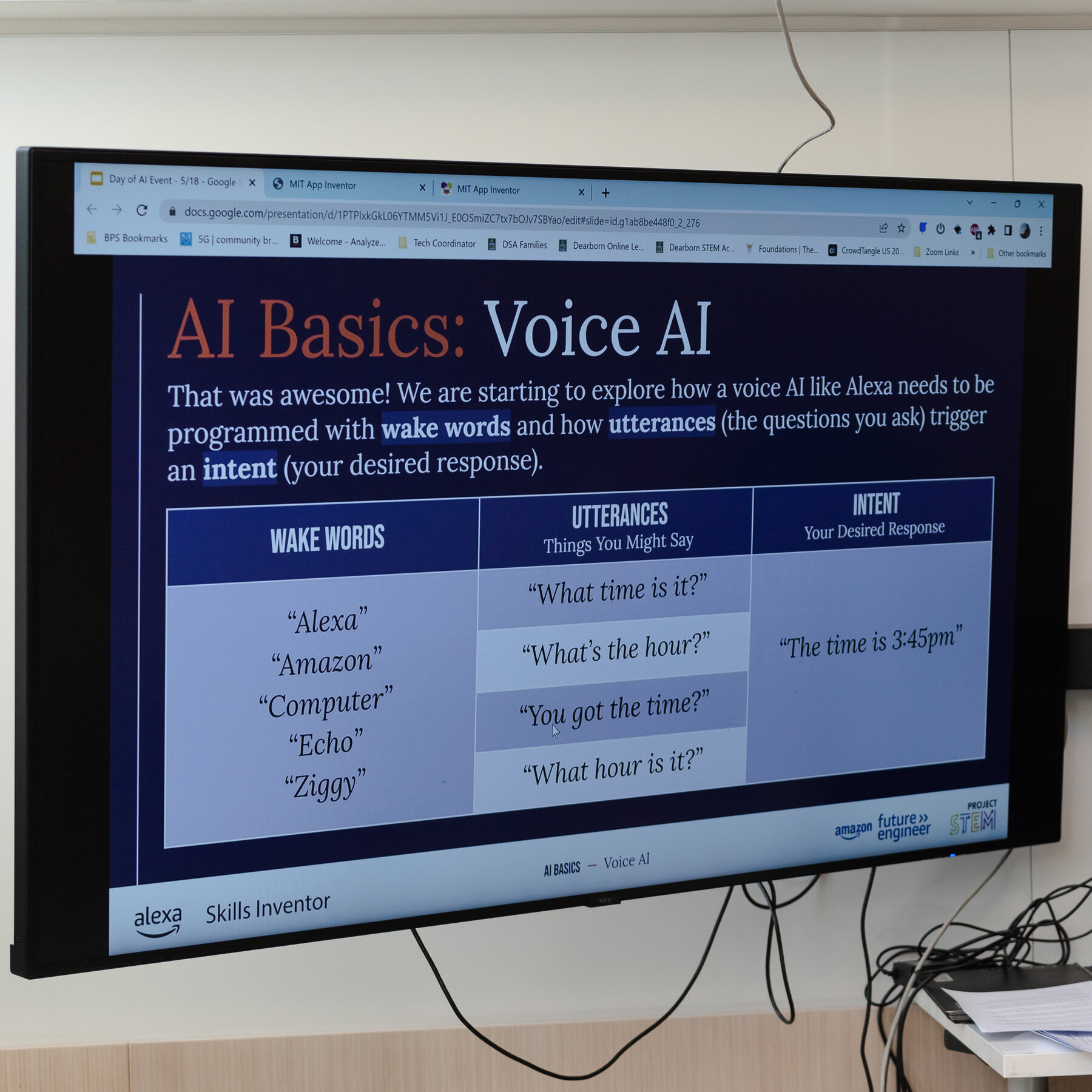
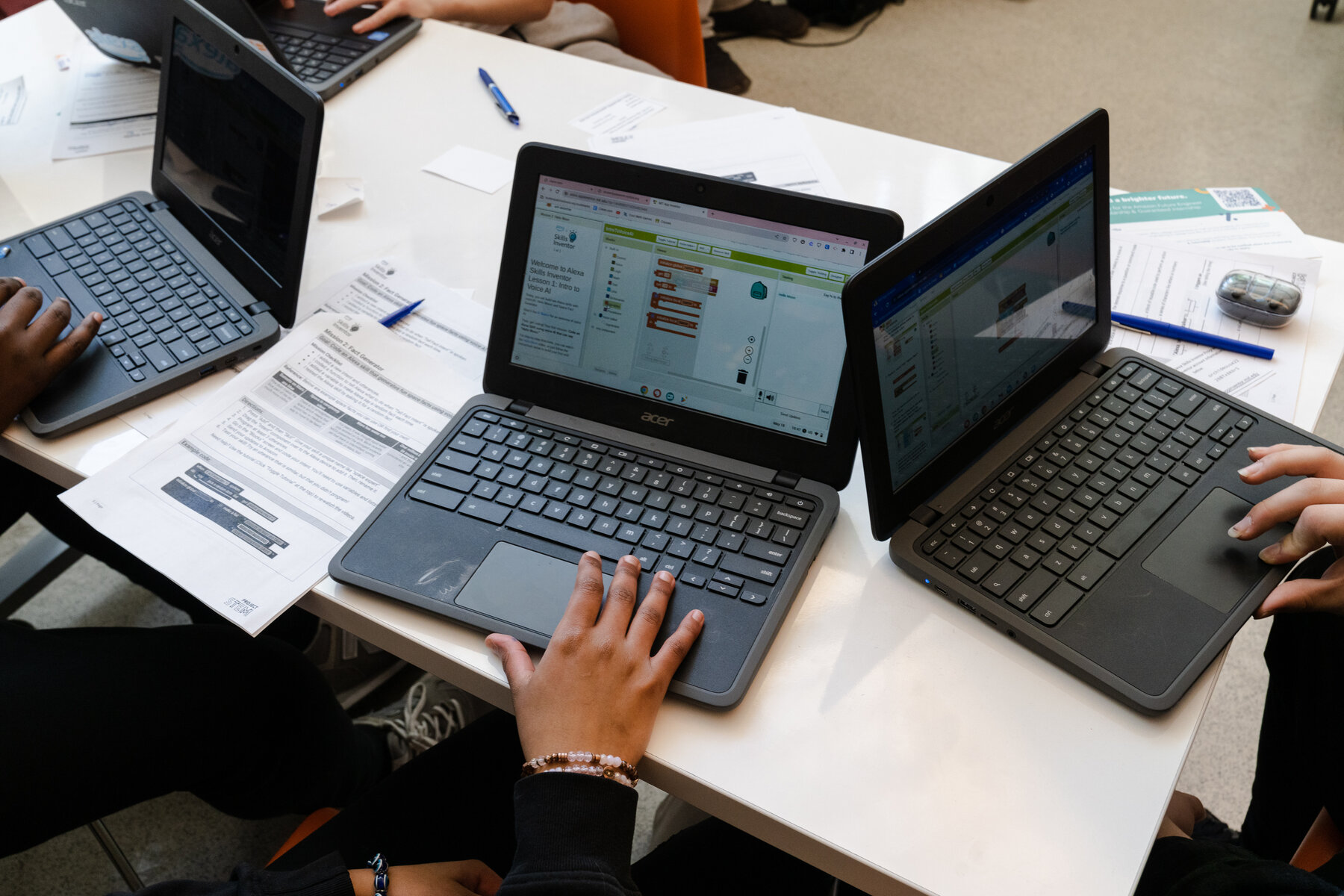
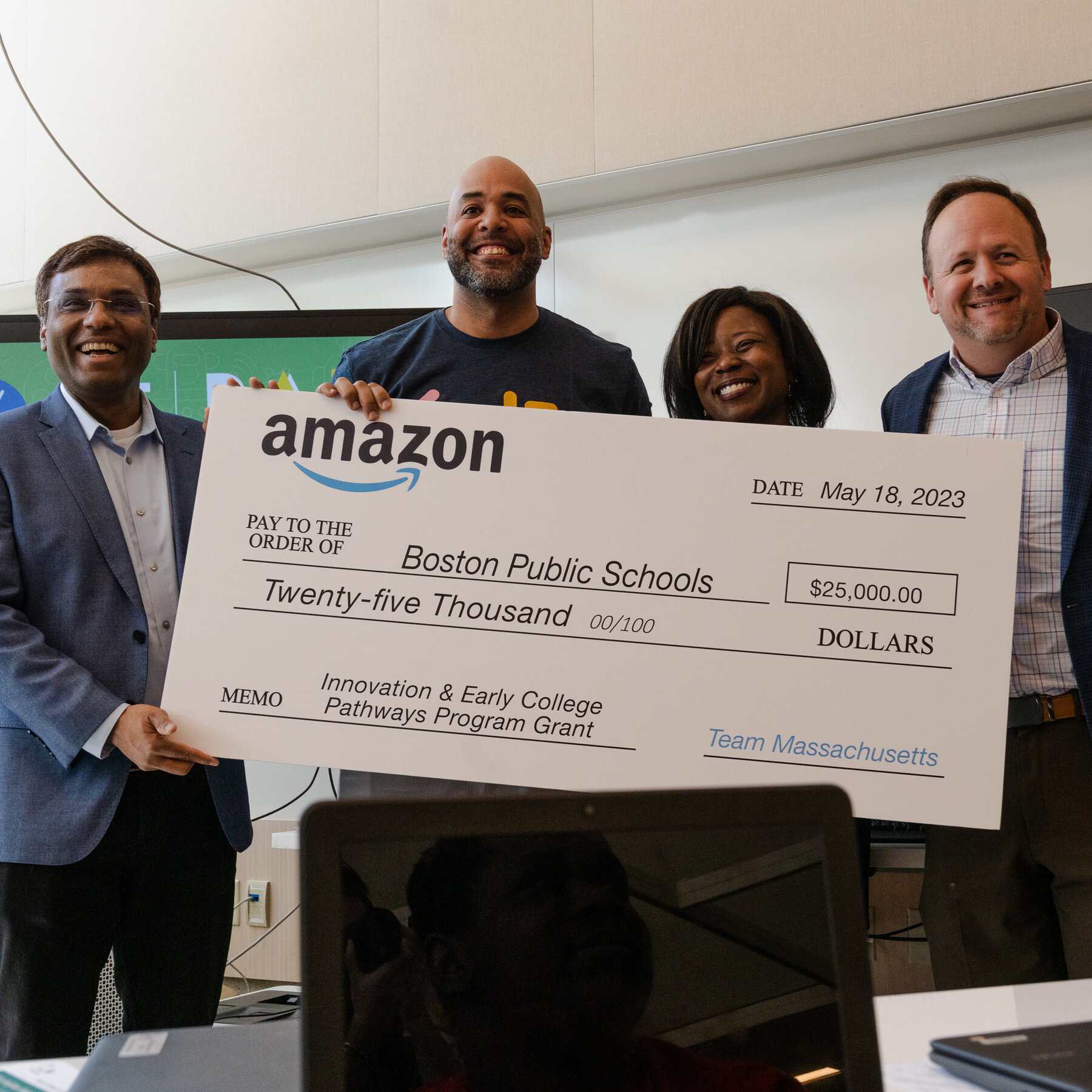
Sophie Park for The New York Times
A team from Amazon recently led a workshop for students at Dearborn STEM Academy in Boston on how to program Alexa.
First, the high school students learned some technical terms like “utterances,” the phrases that consumers say to prompt Alexa to respond.
Dearborn students used pre-written blocks of code to program Alexa to respond to user prompts like “Alexa, tell me a joke.”
As part of the event, Amazon presented Boston Public Schools with a grant of $25,000.
Now, “A.I. literacy” is a new education buzz phrase. Schools are scrambling for resources to help teach it. Some universities, tech companies and nonprofits are responding with ready-made curriculums.
The lessons are proliferating even as schools are wrestling with a fundamental question: Should they teach students to program and use A.I. tools, providing training in tech skills employers seek? Or should students learn to anticipate and mitigate A.I. harms?
Cynthia Breazeal, a professor at M.I.T. who directs the university’s initiative on Responsible A.I. for Social Empowerment and Education, said her program aimed to help schools do both.
“We want students to be informed, responsible users and informed, responsible designers of these technologies,” said Dr. Breazeal, whose group organized the A.I. workshops for schools. “We want to make them informed, responsible citizens about these rapid developments in A.I. and the many ways they are influencing our personal and professional lives.”
(Disclosure: I was recently a fellow at the Knight Science Journalism program at M.I.T.)
Other education experts say schools should also encourage students to consider the broader ecosystems in which A.I. systems operate. That might include students researching the business models behind new technologies or examining how A.I. tools exploit user data.
“If we are engaging students in learning about these new systems, we really have to think about the context surrounding these new systems,” said Jennifer Higgs, an assistant professor of learning and mind sciences at the University of California, Davis. But often, she noted, “that piece is still missing.”
The workshops in Boston were part of a “Day of A.I.” event organized by Dr. Breazeal’s program, which drew several thousands students worldwide. It offered a glimpse of the varied approaches that schools are taking to A.I. education.
At Dearborn STEM, Hilah Barbot, a senior product manager at Amazon Future Engineer, the company’s computer science education program, led a lesson in voice A.I. for students. The lessons were developed by M.I.T. with the Amazon program, which provides coding curriculums and other programs for K-12 schools. The company provided more than $2 million in grants to M.I.T. for the project.
First, Ms. Barbot explained some voice A.I. lingo. She taught students about “utterances,” the phrases that consumers might say to prompt Alexa to respond.
Then students programmed simple tasks for Alexa, like telling jokes. Jada Reed, a ninth grader, programmed Alexa to respond to questions about Japanese manga characters. “I think it’s really cool you can train it to do different things,” she said.
Dr. Breazeal said it was important for students to have access to professional software tools from leading tech companies. “We’re giving them future-proof skills and perspectives of how they can work with A.I. to do things they care about,” she said.
Some Dearborn students, who had already built and programmed robots in school, said they appreciated learning how to code a different technology: voice-activated helpbots. Alexa uses a range of A.I. techniques, including automatic speech recognition.
At least a few students also said they had privacy and other concerns about A.I.-assisted tools.
Amazon records consumers’ conversations with its Echo speakers after a person says a “wake word” like “Alexa.” Unless users opt out, Amazon may use their interactions with Alexa to target them with ads or use their voice recordings to train its A.I. models. Last week, Amazon agreed to pay $25 million to settle federal charges that it had indefinitely kept children’s voice recordings, violating the federal online children’s privacy law. The company said it disputed the charges and denied that it had violated the law. The company noted that customers could review and delete their Alexa voice recordings.
But the one-hour Amazon-led workshop did not touch on the company’s data practices.
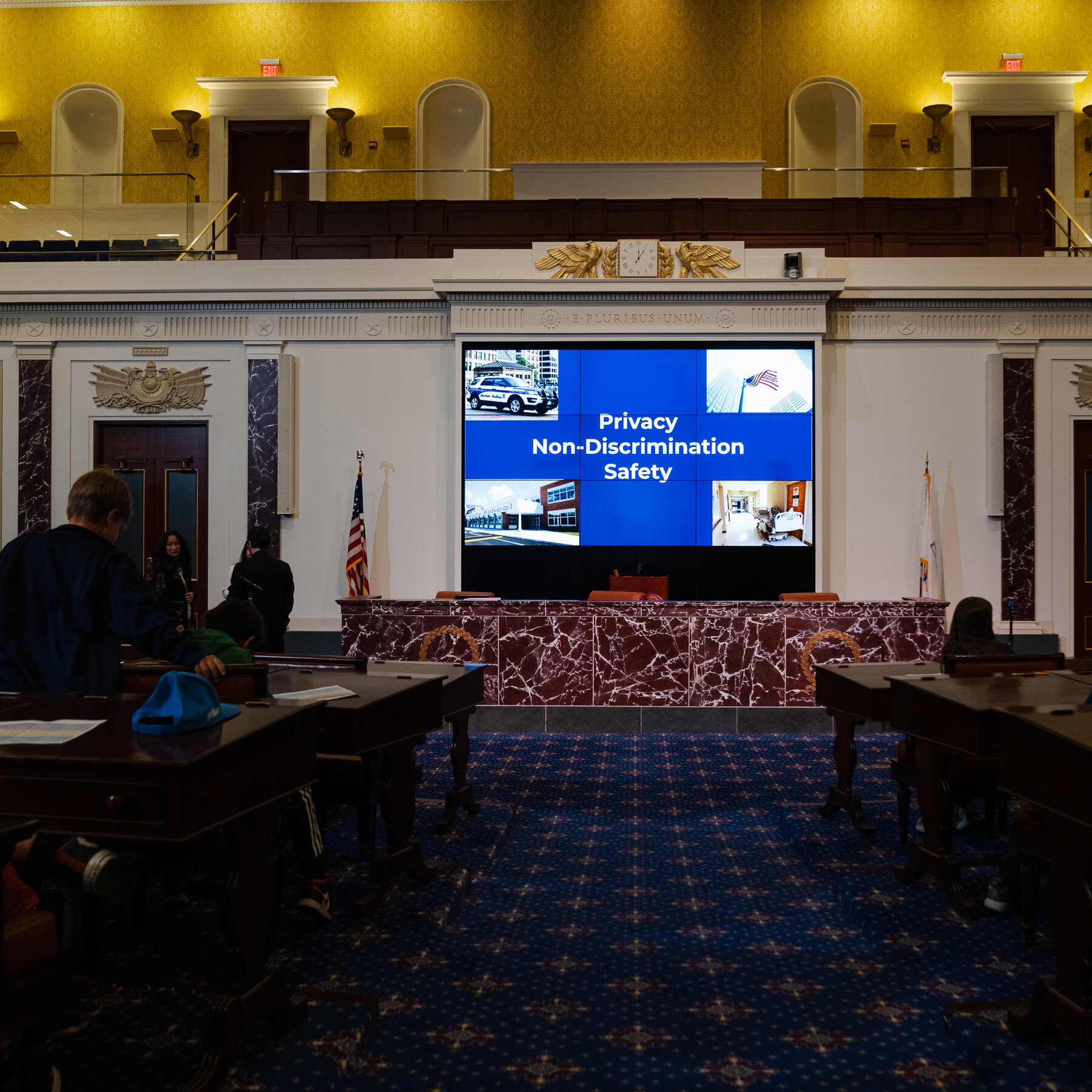
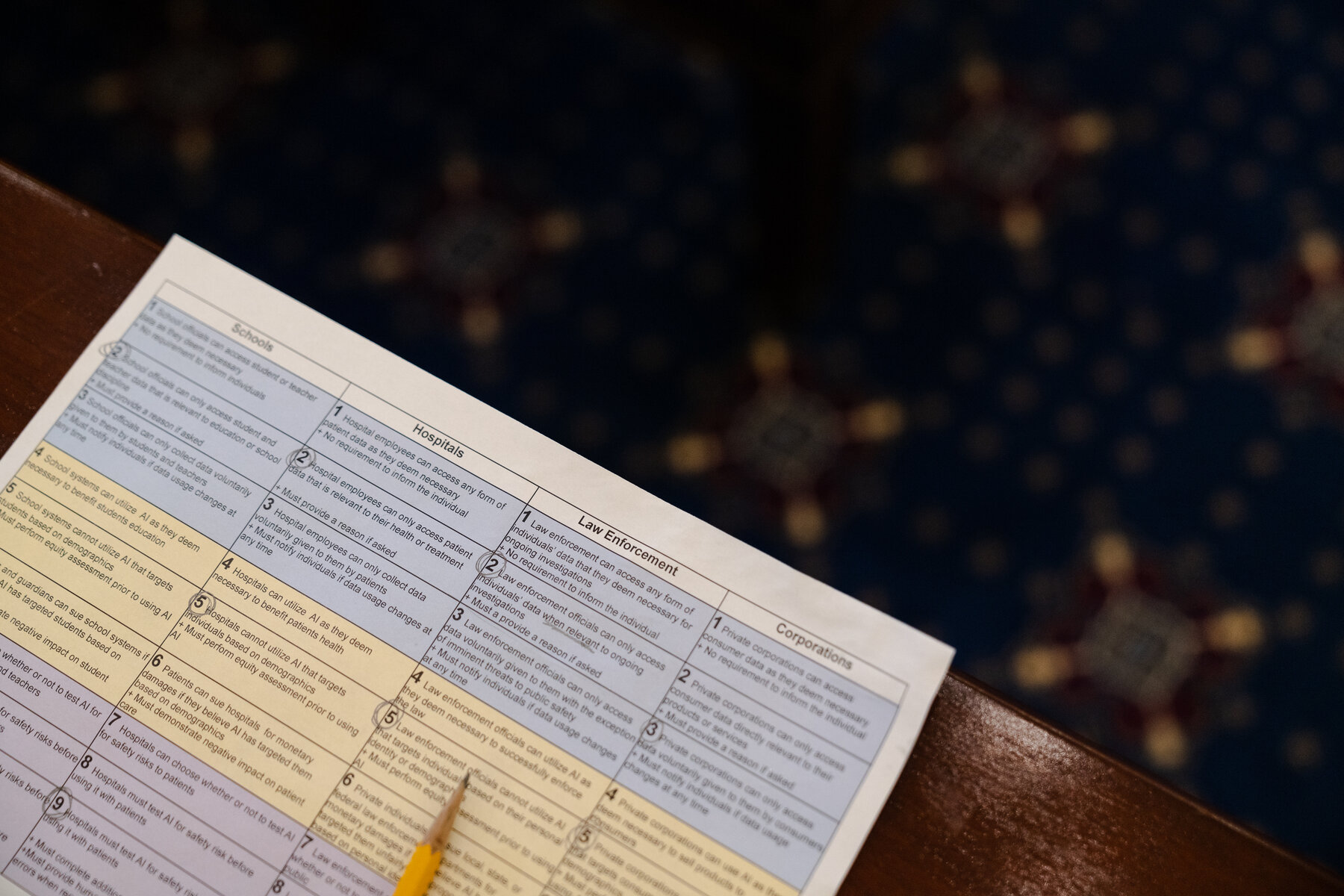
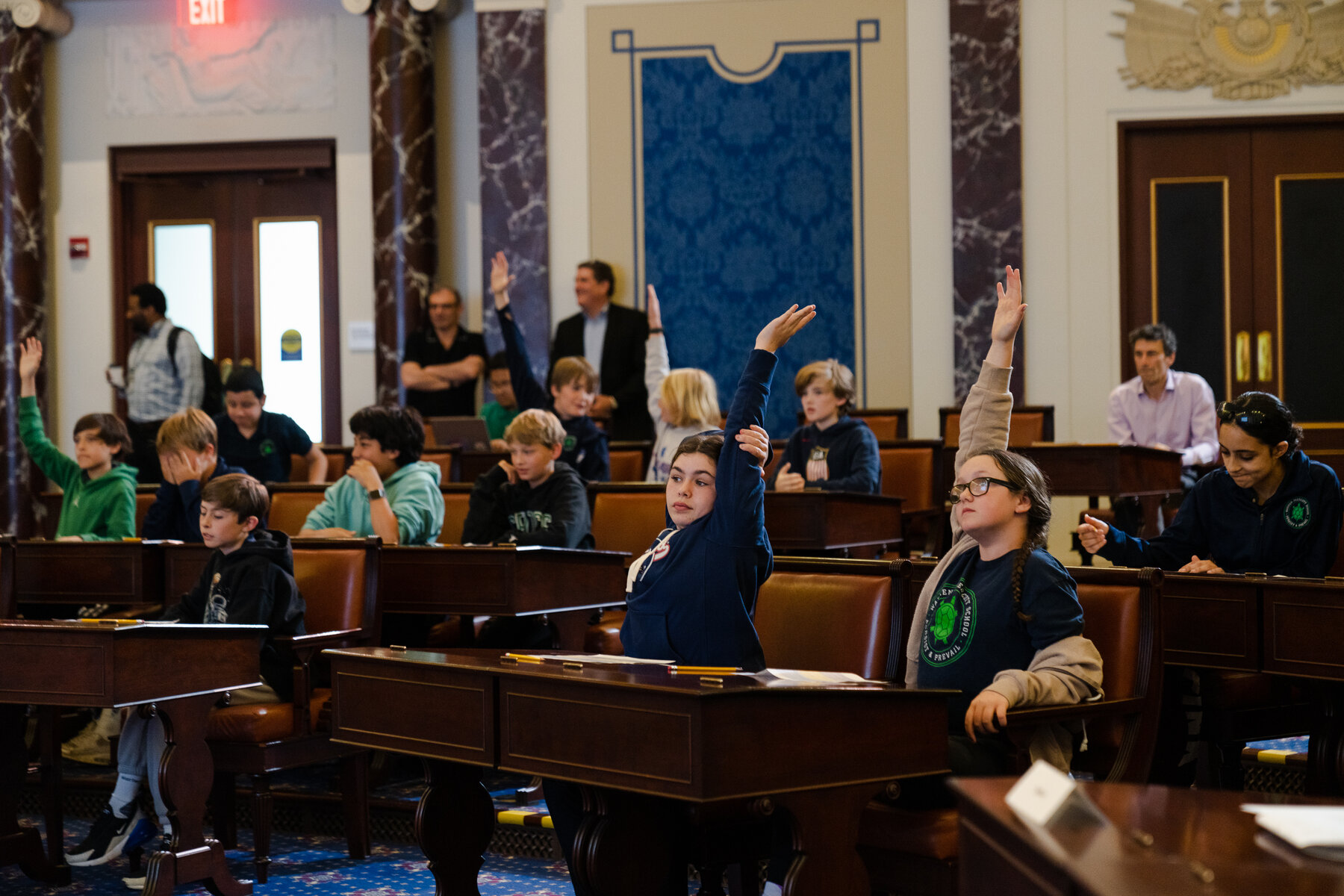
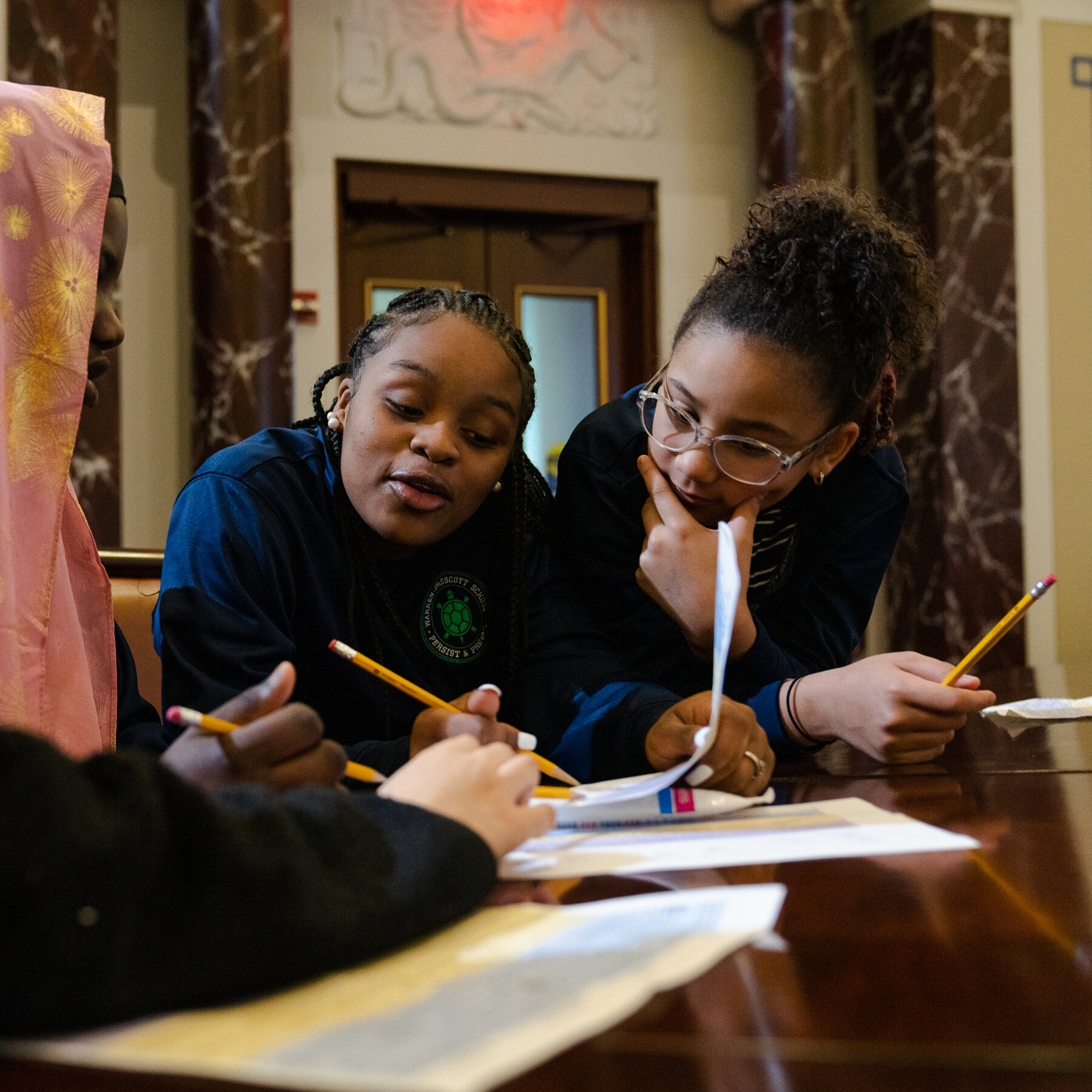
Sophie Park for The New York Times
The Edward M. Kennedy Institute for the United States Senate in Boston recently hosted a student workshop on A.I. ethics and safety.
The assignment: draft a mock federal bill regulating the fairness, safety and privacy of artificial intelligence technologies.
Dozens of middle school students from Warren Prescott School in Charlestown, Mass., discussed how to protect consumers from potential A.I. harms.
The students held a mock hearing to hammer out their proposed A.I. safety bill in a hall designed to replicate the U.S. Senate chamber.
Dearborn STEM students regularly scrutinize technology. Several years ago, the school introduced a course in which students used A.I. tools to create deepfake videos — that is, false content — of themselves and examine the consequences. And the students had thoughts on the virtual assistant they were learning to program that morning.
“Did you know there’s a conspiracy theory that Alexa listens to your conversations to show you ads?” a ninth grader named Eboni Maxwell asked.
“I’m not afraid of it listening,” Laniya Sanders, another ninth grader, replied. Even so, Ms. Sanders said she avoided using voice assistants because “I just want to do it myself.”
A few miles away at the Edward M. Kennedy Institute for the United States Senate, an education center that houses a full-scale replica of the U.S. Senate chamber, dozens of students from Warren Prescott School in Charlestown, Mass., were exploring a different topic: A.I. policy and safety regulations.
Playing the role of senators from different states, the middle school students participated in a mock hearing in which they debated provisions for a hypothetical A.I. safety bill.
Some students wanted to ban companies and police departments from using A.I. to target people based on data like their race or ethnicity. Others wanted to require schools and hospitals to assess the fairness of A.I. systems before deploying them.
The exercise was not unfamiliar for the middle school students. Nancy Arsenault, an English and civics teacher at Warren Prescott, said she often asked her students to consider how digital tools affected them and the people they care about.
“As much as students love tech, they are keenly aware that unfettered A.I. is not something they want,” she said. “They want to see limits.”

